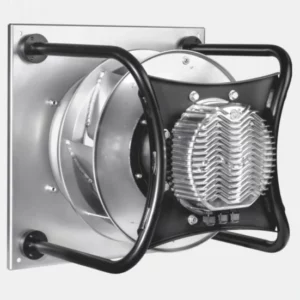Plug-in fans are versatile and convenient cooling solutions that provide relief during hot weather or stuffy indoor environments. These portable fans are designed to be easily plugged into electrical outlets, making them accessible for use in various settings. In this article, we will explore how plug-in fans work and the mechanisms behind their cooling capabilities.
Fan Components and Design
- Motor:At the heart of a plug-in fan is an electric motor. This motor converts electrical energy from the power source into mechanical energy, which drives the rotation of the fan blades. Most plug-in fans feature an induction motor, which is commonly used for its reliability, efficiency, and quiet operation.
- Blades:The fan blades are responsible for creating airflow by rapidly rotating and pushing air forward. The number, size, and shape of the blades can vary depending on the fan model and its intended purpose. The design of the blades affects factors such as air circulation, noise level, and energy efficiency.
- Housing and Grill:The housing of the fan encloses the motor and provides structural support. It also helps direct the airflow and prevents accidental contact with the moving parts. The grill or protective cover surrounding the fan blades serves as a safety feature, preventing objects or fingers from coming into contact with the blades.
Air Circulation and Cooling Mechanisms
- Air Movement:When the plug-in fan is turned on, the motor powers the rotation of the fan blades. As the blades spin, they create a low-pressure area behind them, drawing air from the surrounding environment. This air is then propelled forward, creating a stream of moving air.
- Evaporative Cooling:Plug-in fans primarily provide a cooling effect through increased air circulation. As the fan blows air across the skin, it enhances evaporation from the body, which helps dissipate heat and provides a sensation of cooling. This evaporative cooling effect can make a room or personal space feel more comfortable, even without lowering the actual temperature.
Fan Speed and Control
- Speed Settings:Plug-in fans often offer multiple speed settings, allowing users to adjust the fan’s rotation speed to their preference. Higher speeds produce stronger airflow but may also generate more noise. Lower speeds provide a gentler breeze and quieter operation.
- Oscillation:Some plug-in fans feature an oscillating function that allows the fan to rotate horizontally from side to side. This oscillation helps distribute the airflow across a wider area, providing more comprehensive cooling coverage.
- Additional Features:Depending on the model, plug-in fans may include additional features such as adjustable tilting heads, remote control operation, timers, and air ionizers for improved air quality.
Can you explain how the oscillation feature works in plug-in fans?
The oscillation feature in plug-in fans allows the fan to rotate horizontally from side to side, distributing the airflow over a wider area. Here’s how the oscillation feature works in plug-in fans:
- Motorized Oscillation Mechanism
Plug-in fans with oscillation functionality are equipped with a motorized oscillation mechanism. This mechanism is typically located at the base or within the fan housing. It consists of gears, linkages, or a motor-driven mechanism that controls the movement of the fan head. - Oscillation Range and Control
The oscillation feature can usually be controlled through a switch or button located on the fan itself or via a remote control. When activated, the mechanism begins to rotate the fan head back and forth within a predetermined range. The range of oscillation can vary depending on the fan model but typically covers a wide angle, such as 90 degrees or 180 degrees. - Improved Air Distribution
As the fan head oscillates, it directs the airflow in a sweeping motion from one side to the other. This horizontal movement helps distribute the air over a broader area, ensuring that the cooling effect reaches more parts of the room or space. It can be particularly beneficial in larger rooms or when multiple people are present, as it helps provide a more even and comfortable airflow. - Adjustable Oscillation Angle
Some plug-in fans allow users to adjust the oscillation angle to suit their preferences. This feature enables users to customize the direction and range of the oscillation, directing the airflow precisely where it is needed. Adjustable oscillation angles add flexibility and versatility to the fan’s cooling capabilities. - Independent Control
In many plug-in fans, the oscillation feature operates independently of the fan speed settings. This means you can choose to have the fan oscillate while running at your preferred speed, or you can disable the oscillation and use the fan in a stationary position.
By incorporating the oscillation feature, plug-in fans create a more widespread and even airflow distribution. This helps overcome the limitations of a fixed-direction fan and provides enhanced cooling and comfort in a room or space. Whether it’s circulating air in a larger area or reaching multiple occupants, oscillating plug-in fans offer greater flexibility and improved cooling performance.
Plug-in fans provide convenient and effective cooling solutions through their simple yet efficient design. By utilizing an electric motor to power the rotation of fan blades, they create airflow and enhance air circulation, plug in fan helping to alleviate heat and provide a cooling sensation. With various speed settings, oscillation capabilities, and additional features, plug-in fans offer customizable cooling options for different environments and personal preferences. Whether used in homes, offices, or other indoor spaces, plug-in fans are reliable and accessible tools for maintaining comfort during hot weather or in stuffy conditions.
